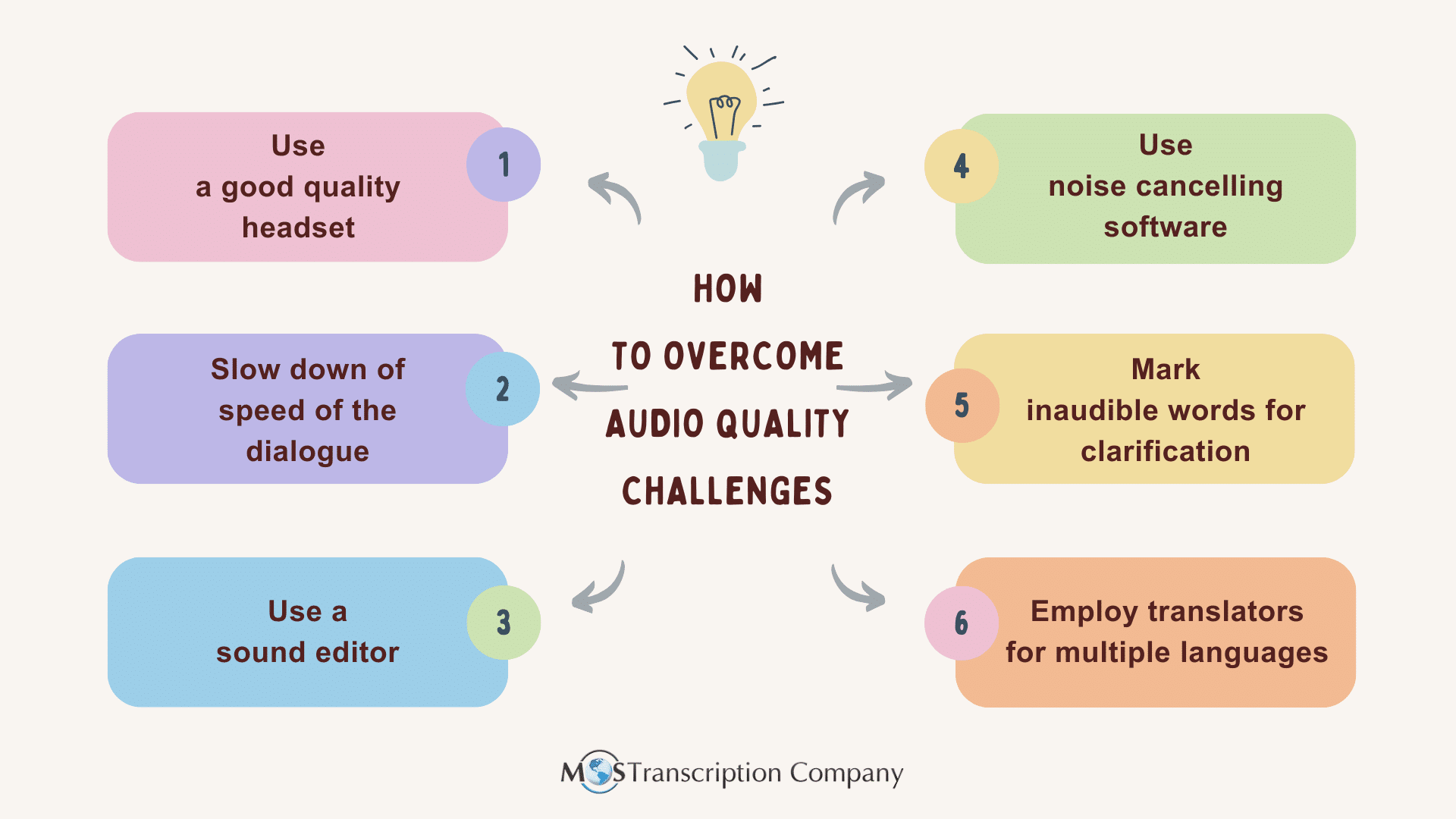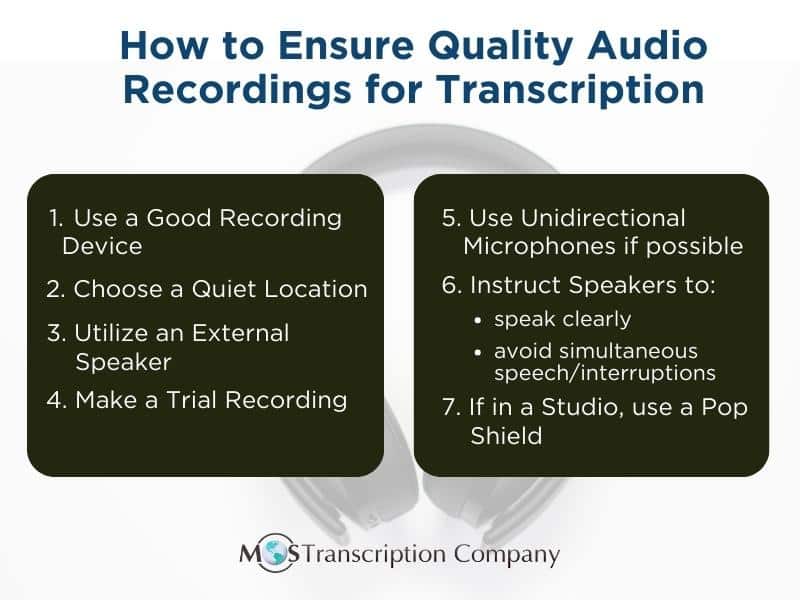
The need for efficient, accurate, and accessible digital documentation across various industries in today’s rapidly evolving business landscape is fuelling the demand for audio transcription services. According to Persistence Market Research, the worldwide demand for business transcription was valued at US$2.95 bn in 2022 and is forecast to exceed US$11.7 bn by the end of 2032.
Transcribing audio and video interactions such as meetings, conference calls, podcasts, interviews, and other interactions ensure that the content can be stored, shared, or used for reference purposes. As this is a time-consuming and tedious task, often made more challenging by difficult audio, most businesses rely on professional transcription companies to document these important conversations.
Difficult Audio Makes Transcription a Major Challenge
Did you know that difficult audio is one of the most significant challenges of transcribing business interactions? Complex or poorly recorded audio refers to any source material that is challenging to transcribe, demanding considerably more time and effort in the transcription process.
Factors contributing to poor-quality audio recordings include:
- Background noise: Sounds such as traffic, machinery, or conversations affect audio clarity
- Overlapping voices: Simultaneous speaking, interruptions, or multiple speakers talking at once.
- Low-quality equipment: Using inexpensive or faulty recording devices, microphones, or outdated technology.
- Distance from source: Being too far from the recording source or improperly positioning the microphone.
- Indistinct speakers: Speaking softly or too fast, overlapping and lagged conversation, mumbling, having strong accents or mispronouncing words.
- Technical issues: Malfunctions in recording devices, glitches, interference, or file corruption.
- Acoustics: Echoes, reverberations, or poor acoustics in the recording space can distort the sound
- Fluctuations in volume levels: Inconsistencies in audio volume, whether too loud or too soft.
Other things contributing to audio clarity issues include inaudibility in some parts of the recording, “plosives” – the explosive sound consonants make when spoken into a microphone, and unnatural sound effects created by audio
Though transcription is a time-consuming and laborious task, it is easier to handle when the audio recording is clear and audible and in the same language, even if there are multiple people in the recording. However, audio recordings may have multiple issues, making it extremely challenging for the transcriptionist to handle. This could affect the quality and cost of your project.
How Professional Transcriptionists Overcome Audio Quality Challenges
Strategies Professionals use to Overcome Challenges of Poor-Quality Recordings
Here are six strategies that teams in digital transcription agencies use to deal with poor quality recordings:
Using a Top Quality Headset
Transcriptionists use high-quality headphones that connect to a computer or audio-playing device via a USB port or a 3.5 mm headphone jack to listen to audio content and convert it into text. Features of that determine headphone quality include:
- the diameter of the headphone driver (the larger the driver’s diameter, the better the sound quality);
- diameter of speaker – for e.g., if it is an over-ear headset, a speaker of at least 40 mm is considered the best choice; quality of the electrical conduction;
- sound sensitivity or the ability of the headphones to detect sound, even at the smallest change/volume;
- electrical resistance
- frequency response
- noise characteristics such as noise isolation and/or noise cancellation
Slowing down Speed of the Dialogue
Transcription software programs allow you to slow down the speed of the playback of the audio when words are difficult to understand. Slowing down the speed of the audio:
- can eliminate background noise and help complete the files faster
- avoid the need to continuously rewind the file and listen to it multiple time to understand the difficult audio
- improve turnaround time (TAT), an important goal for most projects
- help with accents of non-native English speakers or a speaker who has some form of speech impairment
However, in some cases, slowing down the audio playback can lead to spending more time on the file, but reliable transcriptionists work on their typing speed to overcome this problem.
Using a Sound Editor
Professional transcriptionists use a sound editor to reduce the background noise, eliminate the echo, adjust the audio’s pitch, modify the volume level of the frequencies, and overall, make voices sound better.
Using Noise Cancelling Software
Software tools are used to clean up sound and remove noise. Popular free tools include Audacity and Krisp come with advanced features to effectively minimize background noise.
Marking Inaudible Words
Rather than trying to guess inaudible words in the audio recording, professionals will mark words that are hard to comprehend to indicate that that part of the recording was not clear. They may insert timestamps to indicate the part of the recording that lacked clarity using a specific format, for e.g., “inaudible at 00:15:35”.
Using Translators for Multiple Languages
If the audio recording has people speaking in different languages, an online transcription company will employ translators to help their team do their job.
If using these strategies cannot help, the transcription service will inform you about it. Poor audio and extra transcription time can add to the cost of your project.
Tips to Ensure Quality Audio Recordings
As you now know, many factors can combine to make transcription complex and add to the time taken to complete the work. If you are considering audio transcription services, there are many things you can do to ensure good audio recordings.
Clear audio recordings will allow your audio transcription company to provide you with accurate and timely documentation at cost-effective rates.





